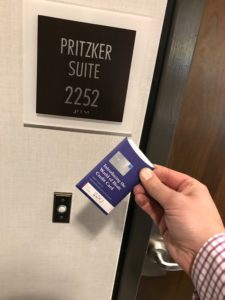
Think about the most incredible customer experience you’ve ever had. Maybe it was a fantastic stay at a resort, or your favorite brand including a personal note in your online order, or a mobile checkout experience that didn’t require typing a million fields in on a tiny keyboard. Now imagine you’re a company trying to recreate that incredible customer experience and keep it consistent across websites, mobile, brick and mortar stores, call centers, etc. That’s Experience Optimization. And it’s difficult… really difficult.
Experience optimization requires many of the same tools, tactics, and strategies for digital optimization: A/B testing, personalization, user research, analytics, user testing, and others. The only difference is that experience optimization does not end at checkout—it goes far beyond it.
We’ve already seen the impact of this trend in retail, as the world’s biggest and/or most disruptive e-commerce companies race to connect digital and in-store channels and roll out new, optimized experiences that offer differentiated value to customers. Forever working in the shadow of Amazon, many brands have incorporated high-end packaging and specialized care instructions (as seen with Tecovas). Purple Mattresses and Brooklinen include surprise accessories or a personalized message within your order. Touches like these not only enhance the overall customer experience but also build brand loyalty.
So while Amazon poses some very real and significant challenges to online retailers, the trend towards experience optimization and personalization enables competing brands to come to life in more creative, and loyalty-building ways. Remember that at the end of the day, Amazon sells convenience first, rather than products. Your customer experience offers the greatest strategic advantage over your biggest competitors.
Consumer response to the experience optimization trend has been positive. According to Salesforce’s 3rd Annual State of the Connected Customer Survey, 67% of consumers will pay more for a better experience. A 2018 study by Forrester and Adobe confirmed this, reporting that experience-led companies have 1.6x higher customer satisfaction rates and 1.9x higher average order value.
As consultants in this field, we’re already thinking about what’s next and which industries are poised to capitalize on insights uncovered by pioneering retailers and take it to the next level.
My vote? Travel and hospitality. Here’s why.
First, I feel like I’m a fair judge on this. As the Senior Director of Business Development at Brooks Bell, discussing the digital, analytical and experience-related challenges faced by leading brands is a regular part of my day.
And so is traveling. Just last year, I flew close to 75,000 miles to 19 different cities. I consider my Delta Gold Medallion status (just short of Platinum ☹️) and Hyatt Globalist status (😁) to be badges of honor.
If you’re a road warrior like me, you know that the task of getting from Point A to Point B can be like going into battle. Delays, weather, traffic and—my personal favorite—cancellations, can ruin your travel experience before you even leave for the airport.
Recommended Read: Unpacking Booking.com & Its Use of Behavioral Economics
Luckily, despite these very real challenges, these two brands have already figured out how to make my travel experience much easier. Delta knows I prefer aisle seats for upgrades and will reach out to recommend flight changes if I’m delayed or canceled. These changes are easy to make via their mobile app. Hyatt hotel managers will often reach out before my stay to ask if I have any special requests. I’ve been surprised with wine, food and my favorite snacks along with a handwritten note.
To quote George Clooney in Up in the Air, “It’s these kinds of systematic touches that keep my world in orbit.” More importantly, it keeps me loyal.

Experience optimization is not a set it and forget it practice.
It’s like going to the gym: the more you go, the better your results. But add a healthy diet on top, and you’re really going to crush your competition. The same rules apply to your experience optimization program. Simple A/B testing isn’t enough. You need to test within the lense of your whole customer experience and apply key insights to inform your personalization and optimization strategies. This is critical to developing a customer experience that attracts new customers and builds trust and loyalty among your existing customers.
Considering the impact on the retail industry, it’s not hard to imagine the potential benefits experience optimization could offer to travel and hospitality companies—all of which are engaged in a neck-and-neck competition against each other and aggregators to capture market share, attract higher-value customers, grow customer loyalty, drive more direct bookings and increase AOV.
As more companies evolve their approach and go-to-market in smarter, more personalized ways, customers have become accustomed to brands anticipating their needs and offering unlimited choices. As a result, the stakes continue to rise higher and higher.
Recommended Read: 6 Ideas for Optimizing Your Booking Funnel
CIO’s 2019 State of the CIO report, published just last winter, found that 75% of customers expect companies to use new technology to improve their experiences, but only half say that they believe companies understand their needs and expectations. Further, Genysis’ State of Customer Experience Research reports that 83% of consumers say they want the ability to move between channels when talking to a brand, but only 50% of companies support cross-channel interactions.
Of course, even though experience-led companies report higher earnings and greater market share, only 31% of companies purport to be experience-led. This is because experience optimization is always a great idea in theory, but companies face real challenges in achieving this ideal.
- Culture: We’ve found that many companies grossly underestimate the internal changes needed to transform their customer experience. Optimization—whether targeting a single webpage or the broader customer experience—should always be supported by testing. Because experience optimization requires coordination and collaboration across digital and in-person channels (and their associated teams), a culture of experimentation is critical to innovating and transforming your customer experience in a way that is profitable, informed by data and places the customer at the heart of your efforts.
- Strategy: We often see companies jump into optimizing their customer experience without realizing they need a team, tools, processes and, most importantly, strategy to execute it. Similar to personalization, experience optimization is customer-centric, not business-centric. This means when it’s done right, it often results in a positive business outcome, but your intended goal should always be focused on solving customers’ problems at scale.
- Data & Technology: Poor data or no data at all, siloed teams, and fragmented technology stacks: when it comes to technical limitations that are holding companies back from optimizing at scale, we’ve seen it all. This is particularly true for personalization. While advances in AI and machine learning technologies promise to deliver the right experience at the right time to the right person, this promise is only as strong as the data behind it.
Underpinning all of this is the opportunity at hand, felt by thousands—if not millions—of frustrated and exhausted travelers every day. As I know all too well, the travel experience is laden with opportunities to optimize, personalize, relieve stress, surprise, and delight, and add value—from initial research to booking, to the days leading up to your trip, to the moment you step into an airport terminal or a hotel lobby.
And so the race is on. The first travel and hospitality brand to truly figure this out at scale, and for all their high-value customer segments, will secure its place as the leader in the market and inspire the next wave of innovative customer experiences. We’re excited to be a part of it.
Recommended Read: 10 Digital Trends in Travel & Hospitality for 2019 and Beyond










